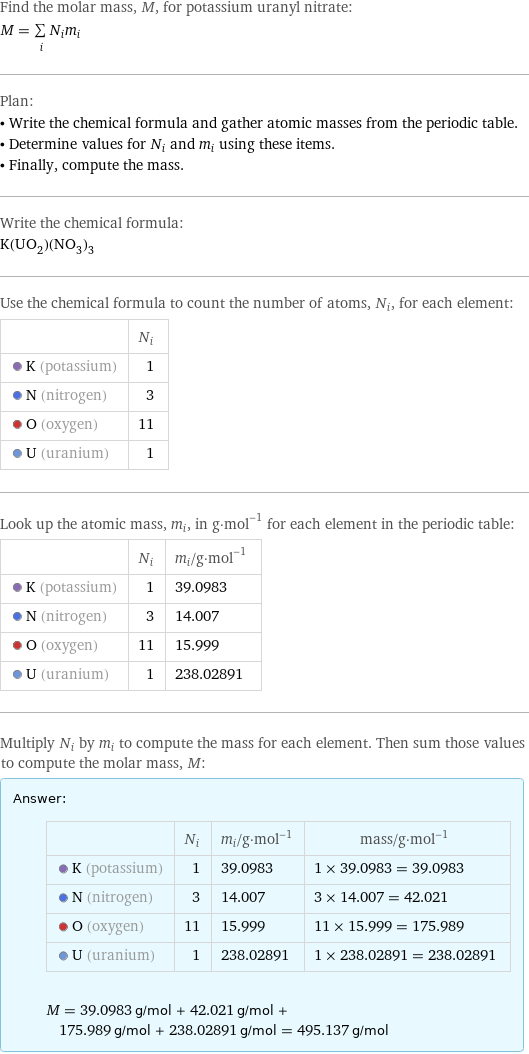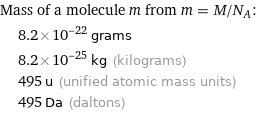Input interpretation

potassium uranyl nitrate | molar mass
Result

Find the molar mass, M, for potassium uranyl nitrate: M = sum _iN_im_i Plan: • Write the chemical formula and gather atomic masses from the periodic table. • Determine values for N_i and m_i using these items. • Finally, compute the mass. Write the chemical formula: K(UO_2)(NO_3)_3 Use the chemical formula to count the number of atoms, N_i, for each element: | N_i K (potassium) | 1 N (nitrogen) | 3 O (oxygen) | 11 U (uranium) | 1 Look up the atomic mass, m_i, in g·mol^(-1) for each element in the periodic table: | N_i | m_i/g·mol^(-1) K (potassium) | 1 | 39.0983 N (nitrogen) | 3 | 14.007 O (oxygen) | 11 | 15.999 U (uranium) | 1 | 238.02891 Multiply N_i by m_i to compute the mass for each element. Then sum those values to compute the molar mass, M: Answer: | | | N_i | m_i/g·mol^(-1) | mass/g·mol^(-1) K (potassium) | 1 | 39.0983 | 1 × 39.0983 = 39.0983 N (nitrogen) | 3 | 14.007 | 3 × 14.007 = 42.021 O (oxygen) | 11 | 15.999 | 11 × 15.999 = 175.989 U (uranium) | 1 | 238.02891 | 1 × 238.02891 = 238.02891 M = 39.0983 g/mol + 42.021 g/mol + 175.989 g/mol + 238.02891 g/mol = 495.137 g/mol
Unit conversion

0.49514 kg/mol (kilograms per mole)
Comparisons

≈ 0.69 × molar mass of fullerene ( ≈ 721 g/mol )

≈ 2.5 × molar mass of caffeine ( ≈ 194 g/mol )

≈ 8.5 × molar mass of sodium chloride ( ≈ 58 g/mol )
Corresponding quantities

Mass of a molecule m from m = M/N_A: | 8.2×10^-22 grams | 8.2×10^-25 kg (kilograms) | 495 u (unified atomic mass units) | 495 Da (daltons)

Relative molecular mass M_r from M_r = M_u/M: | 495